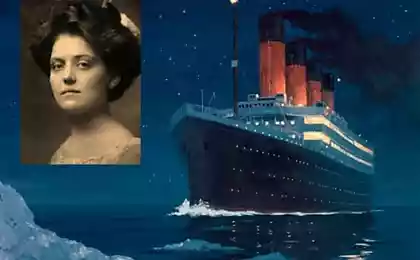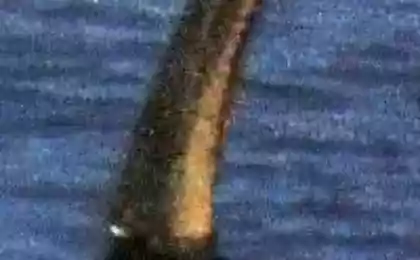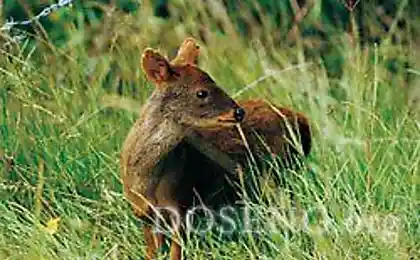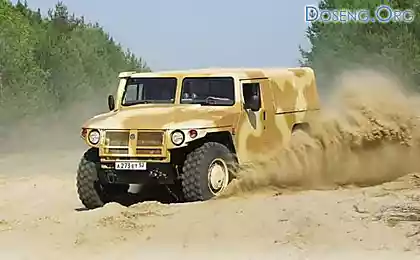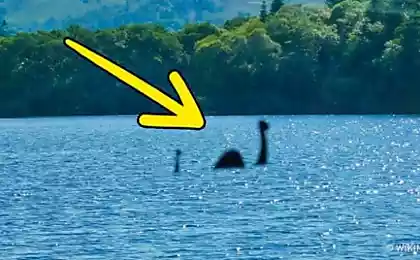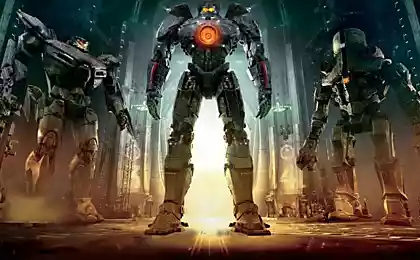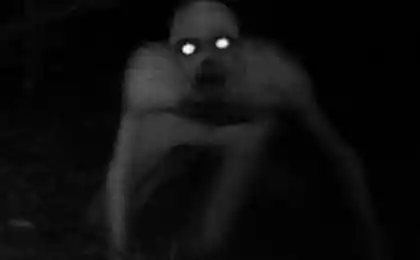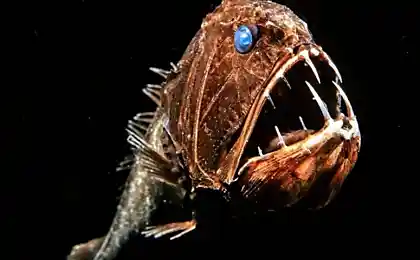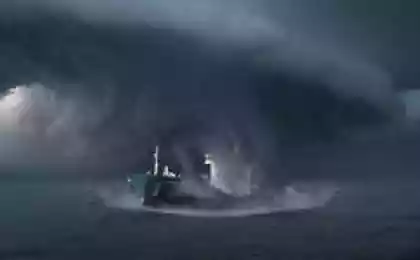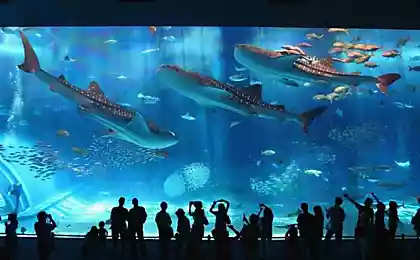1194
10 most terrifying monsters from the ocean depths
As the hero of the famous film "Space - it's just, there's a void." Apparently so our man-made machines have crept up to the borders of the solar system, but did not investigate more than 5% of the world okeana.A Meanwhile, even this is negligibly small part of knowledge enough to be terrified when he saw the creatures that inhabit the depths. Website offers you verify this personally ...
1. Meshkorot h2> Meshkorot - the only known genus of deep-sea fish family meshkorotyh. They reach 2 meters in length and are found at a depth of 2 to 5 kilometers. They feature a big, strong and flexible mouth curved into the mouth of teeth.
2. Giant grenadier h2> The giant grenadier is most often found in the seas surrounding Russia: in the Okhotsk - off the coast of Kamchatka and Berigovom - near the Kuril and Commander Islands.
3. A skilled fisherman h2> Rhode luchepёryh deepwater fish family taumatihtovyh his nickname - "a skillful angler" - was no accident. In this deep-sea fish has almost real "rod" of cartilage, with which it preys on other fish and invertebrates.
4. Sabretooth h2> Sabretooth - deep-sea fish living in tropical and temperate zones. It grows up to 15 centimeters in length and weighs only 120 grams.
5. Fish hatchets h2> Fish axes got its name for a distinctive appearance - narrow and wide body-tail "ax." Most often they are found at depths of 200 to 600 meters. The body of the fish is covered with silvery scales, and strongly compressed from sides. Dimensions of "hatchets" small: up to 5 centimeters.
6. Idiakant h2> Small, relatively rare deep-sea fish. Most common in tropical and temperate waters of the Pacific, Atlantic and Indian oceans.
7. Coelacanth h2> In spite of its unattractive appearance, the coelacanth is remarkable that over 400 million years has not changed svogo appearance and body structure. In fact, this unique relic fish - one of the oldest living beings on the planet Earth. It is even older than the dinosaurs!
8. Batizaurus h2> The name "Batizaurus" sounds like a dinosaur, that, in principle, not far from the truth. Bathysaurus ferox refers to deep yascherogolovym that live in tropical and sub-tropical seas of the world, at a depth of 600 to 3,500 meters. Its length is 50-65 centimeters. He is considered the most glubokozhivuschim superhischnikom in the world. And all from what he eats any creature encountered in his way. As soon as the jaws of the devil fish slam - the game is over.
9. Giant isopods h2> Giant isopods - the name of the 9 species of large isopods crayfish that live in the cold waters at the bottom of the Atlantic Ocean. This animal may have more than 50 cm in length. Externally isopods resemble woodlice, though larger than their 50 times.
10. Woodlouse devouring language h2> Woodlouse devouring language - one of the most bizarre and frightening creatures of the ocean. This pagurian parasite clings to the tongue of his victim - spotted rose snapper and does not release it, sucking all the blood out of the language, as that authority does not atrophy. When this happens, the wood louse becomes a new language. It attaches to the body of the old bits of body, feeding on the remains of food that has not had time to swallow the snapper. Himself snapper is not particularly affected by this process while continuing to live and eat, even after it became part of the wood louse.
1. Meshkorot h2> Meshkorot - the only known genus of deep-sea fish family meshkorotyh. They reach 2 meters in length and are found at a depth of 2 to 5 kilometers. They feature a big, strong and flexible mouth curved into the mouth of teeth.

2. Giant grenadier h2> The giant grenadier is most often found in the seas surrounding Russia: in the Okhotsk - off the coast of Kamchatka and Berigovom - near the Kuril and Commander Islands.
The size of fish - compared with other deep-sea creatures - really huge. Adults can reach 2 meters and its weight - 20-30 kg. The maximum recorded age of adult fish was 56 years old, but it is believed that the giant grenadier can live even longer.

3. A skilled fisherman h2> Rhode luchepёryh deepwater fish family taumatihtovyh his nickname - "a skillful angler" - was no accident. In this deep-sea fish has almost real "rod" of cartilage, with which it preys on other fish and invertebrates.
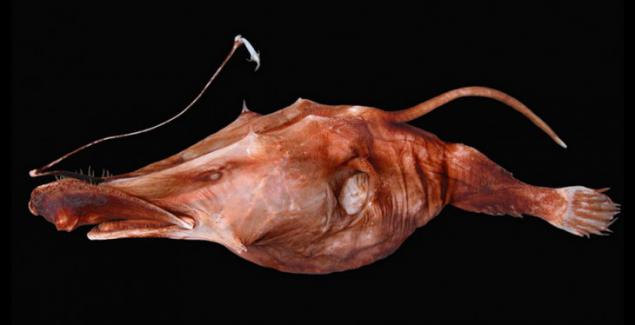
4. Sabretooth h2> Sabretooth - deep-sea fish living in tropical and temperate zones. It grows up to 15 centimeters in length and weighs only 120 grams.
The most remarkable among saber - two long fangs, located on the lower jaw. In relation to the body, they - the longest among fish known to science. And to close the Sabretooth could fall, nature has endowed him with special grooves in the upper jaw and a brain divided into two fish.

5. Fish hatchets h2> Fish axes got its name for a distinctive appearance - narrow and wide body-tail "ax." Most often they are found at depths of 200 to 600 meters. The body of the fish is covered with silvery scales, and strongly compressed from sides. Dimensions of "hatchets" small: up to 5 centimeters.
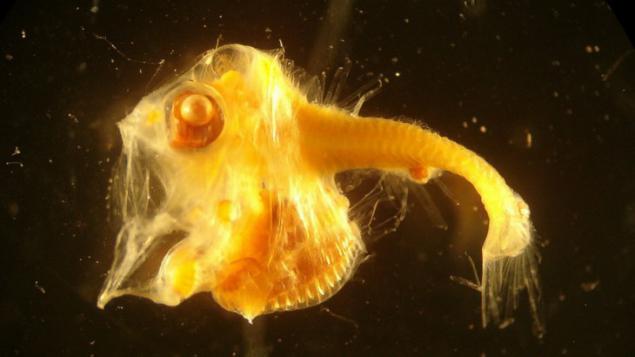
6. Idiakant h2> Small, relatively rare deep-sea fish. Most common in tropical and temperate waters of the Pacific, Atlantic and Indian oceans.
During mating samytsy some can reach as much as half a meter in length. The huge fall planted with crooked teeth sharp, never closes. It departs from the chin barbel, which sometimes exceeds the length of the head 3 times and ends at the end of the bulge.
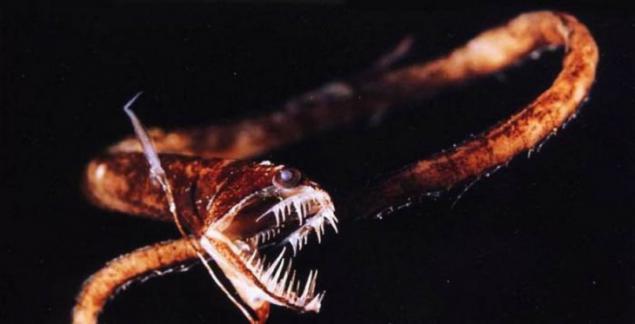
7. Coelacanth h2> In spite of its unattractive appearance, the coelacanth is remarkable that over 400 million years has not changed svogo appearance and body structure. In fact, this unique relic fish - one of the oldest living beings on the planet Earth. It is even older than the dinosaurs!
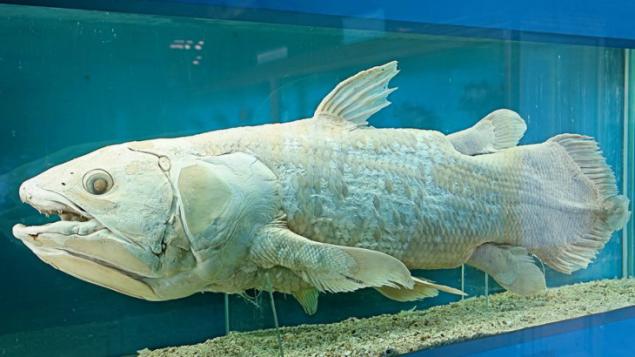
8. Batizaurus h2> The name "Batizaurus" sounds like a dinosaur, that, in principle, not far from the truth. Bathysaurus ferox refers to deep yascherogolovym that live in tropical and sub-tropical seas of the world, at a depth of 600 to 3,500 meters. Its length is 50-65 centimeters. He is considered the most glubokozhivuschim superhischnikom in the world. And all from what he eats any creature encountered in his way. As soon as the jaws of the devil fish slam - the game is over.

9. Giant isopods h2> Giant isopods - the name of the 9 species of large isopods crayfish that live in the cold waters at the bottom of the Atlantic Ocean. This animal may have more than 50 cm in length. Externally isopods resemble woodlice, though larger than their 50 times.
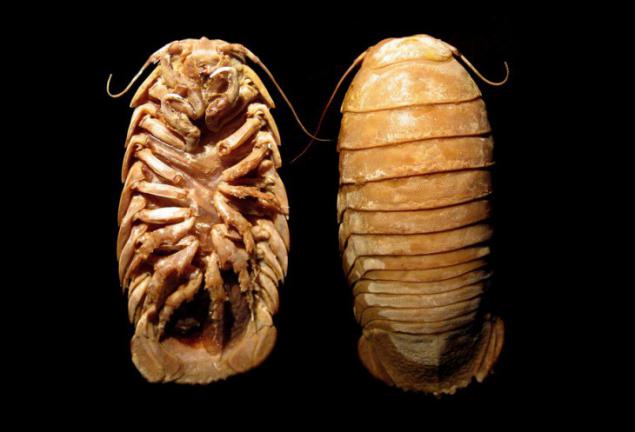
10. Woodlouse devouring language h2> Woodlouse devouring language - one of the most bizarre and frightening creatures of the ocean. This pagurian parasite clings to the tongue of his victim - spotted rose snapper and does not release it, sucking all the blood out of the language, as that authority does not atrophy. When this happens, the wood louse becomes a new language. It attaches to the body of the old bits of body, feeding on the remains of food that has not had time to swallow the snapper. Himself snapper is not particularly affected by this process while continuing to live and eat, even after it became part of the wood louse.
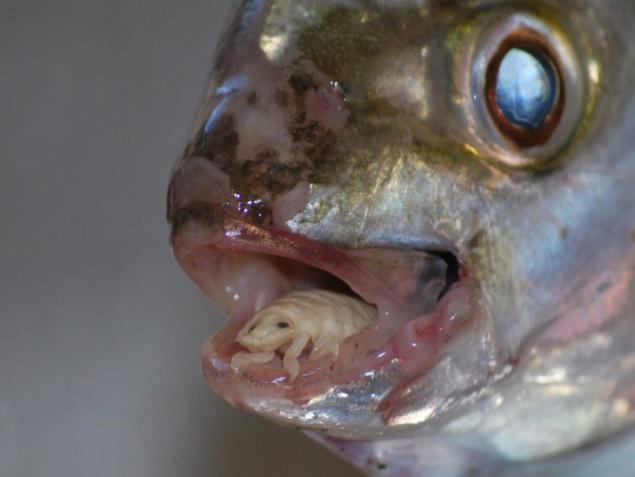
via fishki.net/1700581-10-samyh-strashnyh-chudoviw-iz-okeanskih-glubin.html
25 most terrible airports around the world
8 facts about the wedding, marriage and love through the eyes of children










